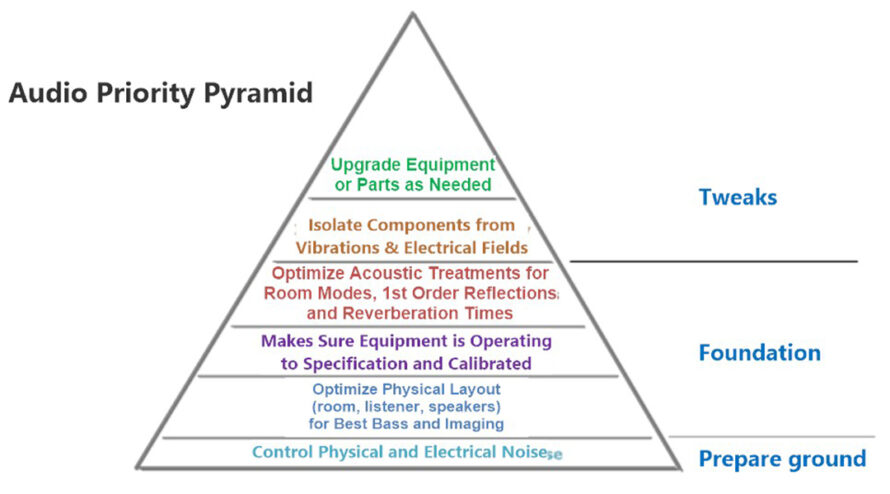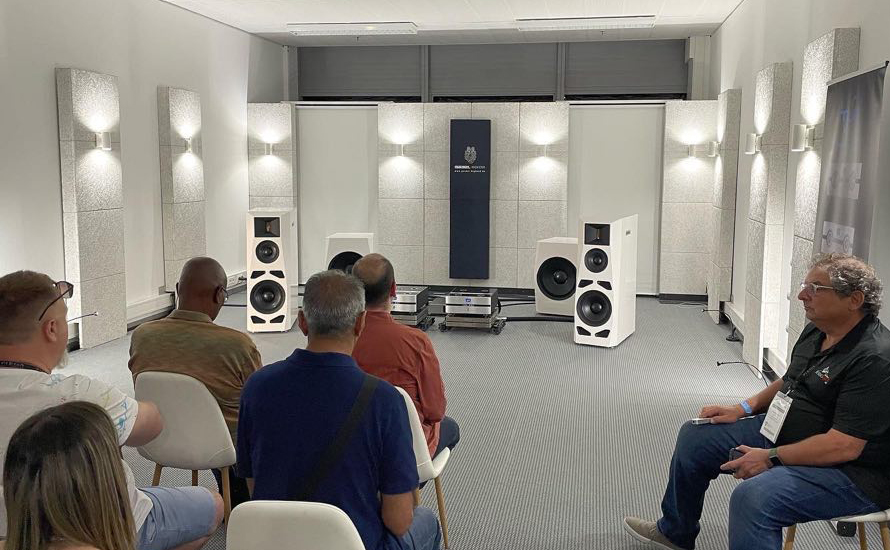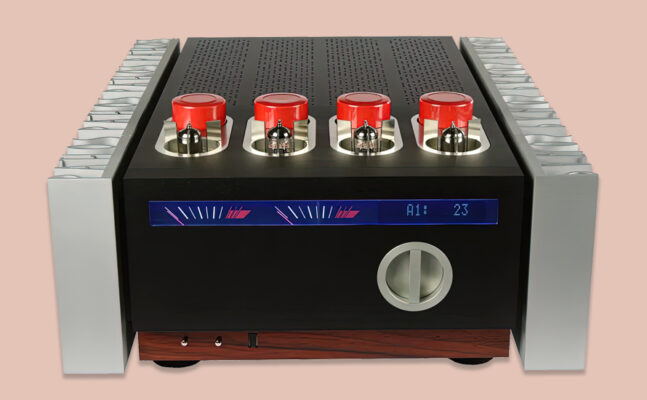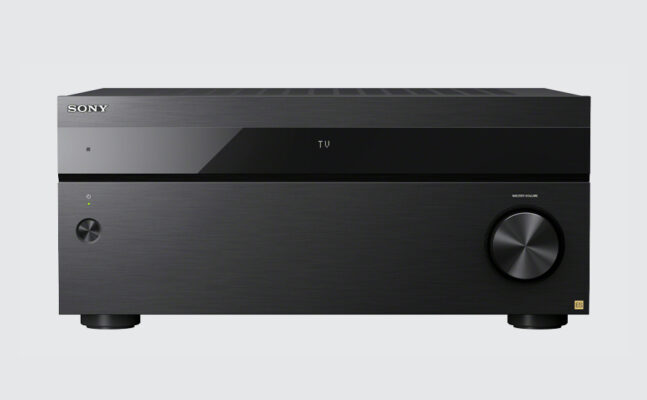Management at TRENDS, Electronics & Design is proud and happy to have Mr. Norman Varney join our editorial staff. Norman has been working in the acoustic control field for quite some time and will be sharing some of his experience regarding how consumers and music lovers can effectively improve their listening area for a better music listening experience. Please join us in welcoming Norman who will be submitting a few articles in his field of expertise.
Here is a short bio
 Norman Varney is the owner of AV RoomService, an acoustic design company that also manufactures innovative acoustical products. Having been in the noise control and sound quality industries for decades he has earned awards for acoustical products and room designs while working for A/V RoomService, Kinetics Noise Control, Owens Corning Science & Technology Center and MIT.
Norman Varney is the owner of AV RoomService, an acoustic design company that also manufactures innovative acoustical products. Having been in the noise control and sound quality industries for decades he has earned awards for acoustical products and room designs while working for A/V RoomService, Kinetics Noise Control, Owens Corning Science & Technology Center and MIT.
Mr. Varney has presented white papers to the noise and vibration industries and written articles on acoustics for numerous publications for decades, as well as participated in seminars and panel discussions. He is an active member of ASTM (Committee E-33 on Building and Environmental Acoustics), Acoustic Society of America, Institute of Noise Control Engineering, AES, NAMM, CEDIA, etc.
• • •
My entire life revolves around acoustics, and I blame it all on The Beatles. As I sit down to write, I am reminded that it’s been fifty-nine years since The Beatles made their debut on the Ed Sullivan Show. I was just a three-and-a-half-years-old when I first heard their music, but I was immediately hooked. The next day, I begged my mom to buy me their 45 record, and I still remember playing the B-side with I Saw Her Standing There and being knocked out. Still do! The band’s live performance on that recording is full of fun energy, and it kick-started my lifelong passion for music. Soon I was collecting all kinds of music. I also started an interest in playing drums and messing around with a small portable reel-to-reel recorder when I was four or five. Today, my love for music, audio, and acoustics remains, and my pursuit for more knowledge in these fields continues.
Music is such powerful medicine. To capture and reproduce it accurately is not an easy task. To experience a great recording, of a great performance, of a great piece of music is the holy grail of audio, right? Having said that, I still enjoy great music even when playing on a cheap boom box.
To get closer to the music, we need to follow a disciplined process. Great equipment alone can never sound great in a poor environment. Conversely, a mediocre system can sound fantastic in a well-designed space. The placement of the equipment within the room and the acoustic properties of the space will dictate the resulting experience for the listener. While high-end equipment may improve sound reproduction from the loudspeakers, it cannot overcome poor acoustics. Electrons do not control sound waves, and tweaking the electrical signal feeding the loudspeakers has limited effects. Once the electrical signal is converted to air pressure variations, and the sound waves propagate through the room (both through the structure and through the air), they are at the mercy of your room’s acoustics. The construction materials and methods, room shape and size, speaker and listener locations, electronic and physical calibration of the equipment, and finally, the interior furnishings and finishes all have a significant impact on the listening experience. In short, these are the ingredients that make or break the possibility of a magnificent listening experience.
As someone who has spent decades studying acoustics, I can attest that great acoustics can transform a mediocre sound system into an incredible listening experience. On the other hand, even the most expensive equipment cannot overcome poor acoustics. The equipment can only perform as well as the acoustics allow it to. The pleasure of your investment is ultimately limited by the acoustics of your space.
These are the topics I love to write and teach others about. I always aim to share my knowledge in a way that is accessible and easy to implement. Many solutions are free and fun to try out. In my writings, I strive to back up my statements with scientific research. Audio and acoustic science have made great strides in the past four decades, and I continue to learn more about it every day. I believe that using both trained ears and instrumentation is essential in evaluating sound quality. For me, the ears have the last say in determining the quality of sound. It’s important to acknowledge that we don’t currently have the means to measure all that we can perceive. Therefore, it can be difficult to correlate what we hear with what we can measure. This is compounded by our unsophisticated and non-standard vocabulary for expressing sonic attributes, which limits quality communication.
Standardization of acoustics for the critical listening playback environment is something that deserves more attention in order to advance our industries, and our love for music. I find that the Recording Academy (Producers and Engineers Wing) has done a little better job addressing recommendations for set-up, calibration, and acoustics (both noise control and sound quality) than the consumer electronics industry has. As for professionals, they understand that neutrality means repeatability, which in turn means better translation to other venues. Consistency from the recording studios, to the mixing studio, to the mastering studios is crucial. Obviously, if the consumer wants to get closer to the art, he or she should strive to have a similar playback environment. By similar, I mean control of the noise floor, room modes, reverberation times, first order reflections, as well as frequency response, speaker/listener positions, speaker time alignment, etc.
If I’m working with speaker monitors or a room that has emphasis around 250 Hz, I need to compensate for it, knowingly or unknowingly, and the chances of it sounding like I expect it to sound elsewhere is near nil. Similarly, if you just bought a new set of speakers based on a review you recently read and you feel that the bass is not right, it could be that the speakers are deficient, or it could be your room that is interfering with them, or doing the same in the reviewer’s room. To understand the results of any experiment, you need to control and track the variables, and start with a level playing field. If you don’t, you will be building your system around, and compensating for, a built-in deficiency. That deficiency could be a room resonance, bias of an amplifier, cable impedance incompatibility, etc. Most audiophiles are building their systems around some major equipment incompatibility or room interference issues. They will forever be compensating for the issue(s), chasing their own tail in a circle of confusion. A neutral playing field stops the confusion.
This is why I suggest controlling the room acoustics first so that you can build your audio system confidently. What you hear will be more accurate and more revealing, not to mention, much more enjoyable and engaging. The equipment’s performance potential will also increase exponentially as these distortions are removed. A level playing field stops confusion and allows you to fully enjoy the music. Your equipment will thank you for it! Just as an electrical system has inductance, resistance and capacitance properties, mechanical and acoustical systems have similar characteristics. The goal is for ease and simplicity of flow.
In the next segment, I will discuss the typical listening environment from an acoustical and electrical point of view, and compare it to the desired. This is where you will begin to understand how much information you are likely missing and distorting.
 I acknowledge that acoustics can be daunting to most audiophiles, and some areas of acoustics can be expensive or even impossible to implement due to physical constraints. But much of it only costs some time, and there are many things that can be done on a tight budget. I have found that there is a hierarchical approach to audio playback for sound quality, and I enjoy sharing my knowledge and experience in my articles here at TED Magazine. As I discuss audio and acoustics, I hope to provide a greater awareness and understanding, and ultimately, a greater enjoyment of music and your system. By identifying and removing problems, you will be able to make better buying decisions, or maybe even become satisfied with what you already own.
I acknowledge that acoustics can be daunting to most audiophiles, and some areas of acoustics can be expensive or even impossible to implement due to physical constraints. But much of it only costs some time, and there are many things that can be done on a tight budget. I have found that there is a hierarchical approach to audio playback for sound quality, and I enjoy sharing my knowledge and experience in my articles here at TED Magazine. As I discuss audio and acoustics, I hope to provide a greater awareness and understanding, and ultimately, a greater enjoyment of music and your system. By identifying and removing problems, you will be able to make better buying decisions, or maybe even become satisfied with what you already own.
I want to caution that applying what you learn here to your audio system may cause increased heart rate, blood pressure, goosebumps, tears, and/or cyclic body movements!





